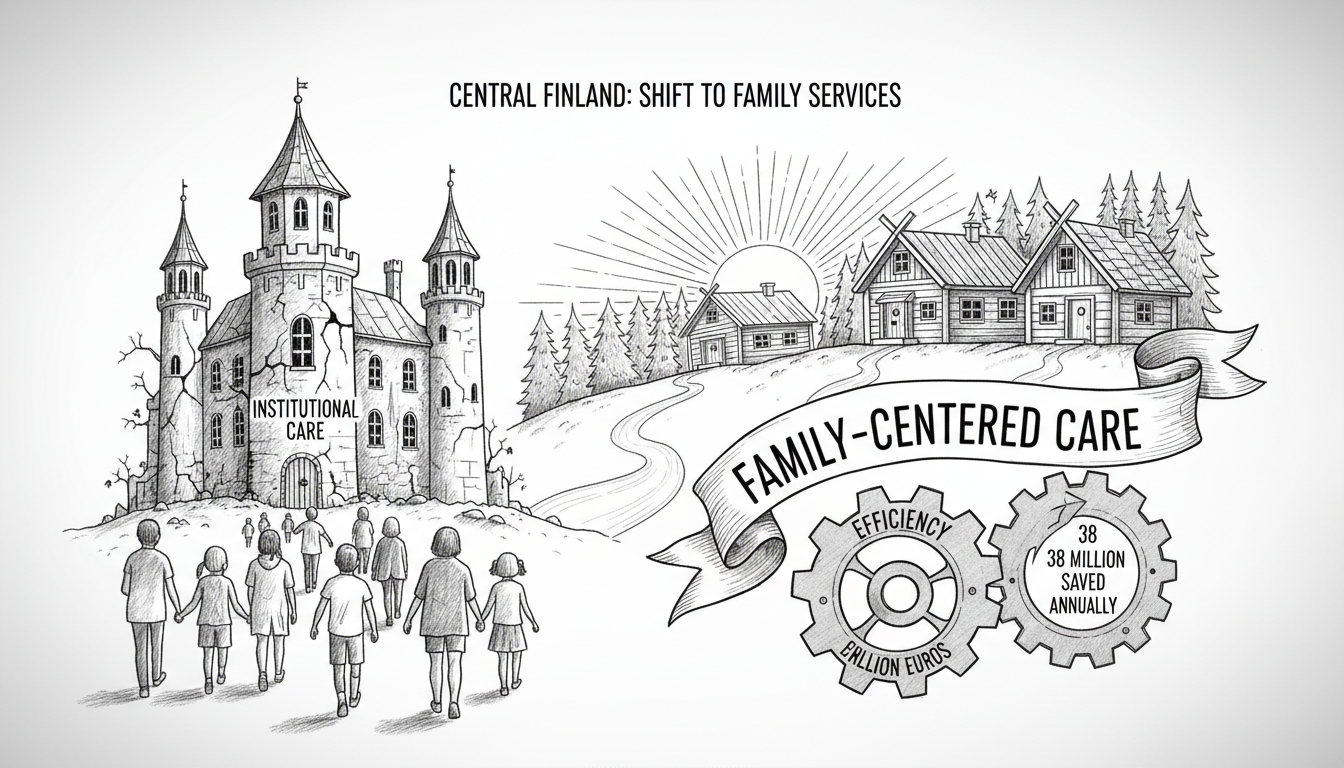An evaluation team in Central Finland has proposed major changes to child protection services. The welfare district seeks to reduce institutional care for children while developing preventive family support. The recommendations aim to improve operational efficiency by approximately three percent. This translates to nearly 38 million euros in annual savings.
The evaluation team held its fourth meeting on Wednesday. They examined social services across the region. Elderly care services and family support received particular attention. Child protection emerged as a key focus area.
The team proposes prioritizing basic social services before implementing more intensive specialized care. This approach would shift resources from institutional placements to preventive family work. The goal is earlier intervention and stronger family support networks.
Welfare district director Kati Kallimo acknowledged the current system relies heavily on institutional care. She described this model as expensive since facilities often operate as purchased services. The region now faces the challenge of transforming its child protection approach.
Finland's welfare districts represent a major structural reform implemented in recent years. These administrative units manage healthcare, social welfare, and rescue services. Central Finland's situation reflects broader national trends in child protection reform.
Many Nordic countries are moving away from institutional care models. Research shows family-based solutions often yield better outcomes for children. The Finnish system traditionally utilized residential care more extensively than neighboring countries.
This proposed shift carries significant implications for international observers. Finland's child protection system often serves as a reference point in global social policy discussions. The changes could influence how other regions approach family services.
Local municipalities will need to develop new service capacities. Social workers require additional training for preventive family work. The transition period may present challenges for both staff and families.
The evaluation team's recommendations now move to implementation planning. District officials must determine timelines and resource allocation. Success will depend on careful management of this service transformation.
What does this mean for children and families in Central Finland? They may encounter more support services within their communities. The changes could reduce family separations when early intervention proves effective.
The financial aspect cannot be overlooked. Redirecting 38 million euros requires careful budget management. These funds could potentially enhance community-based services across the region.

